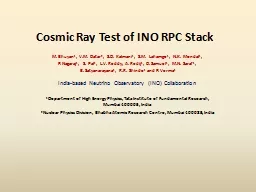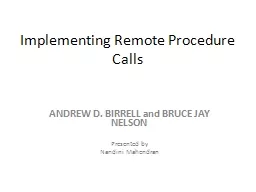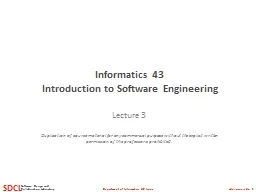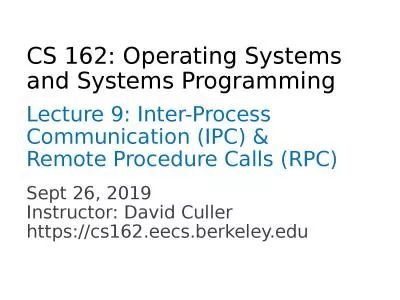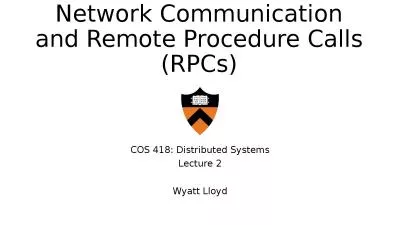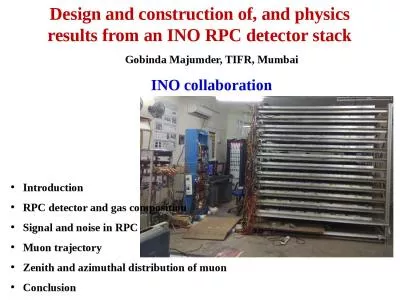PPT-UNIT - 2 Remote Procedure Call (RPC)
Author : erica | Published Date : 2023-06-22
Motivation A RequestReply protocol model naturally fits with the ClientServer model and hence is appropriate for distributed systems RPCs Remote Procedure Calls
Presentation Embed Code
Download Presentation
Download Presentation The PPT/PDF document "UNIT - 2 Remote Procedure Call (RPC)" is the property of its rightful owner. Permission is granted to download and print the materials on this website for personal, non-commercial use only, and to display it on your personal computer provided you do not modify the materials and that you retain all copyright notices contained in the materials. By downloading content from our website, you accept the terms of this agreement.
UNIT - 2 Remote Procedure Call (RPC): Transcript
Download Rules Of Document
"UNIT - 2 Remote Procedure Call (RPC)"The content belongs to its owner. You may download and print it for personal use, without modification, and keep all copyright notices. By downloading, you agree to these terms.
Related Documents


